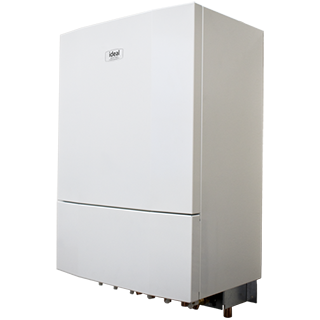Unless you live in an area with a heat network – and plenty of us do – you may not be familiar with what they are and their advantages over more widely used ways of heating homes.
So, we sat down with Darren Finley, our Chief Commercial Officer - Commercial Products, to find out more.
Darren, what exactly is a heat network?
Put simply, a heat network delivers heat, in the form of hot water, from a central source to the end users through a network of insulated pipes.
These networks, also known as district heating, can be as large as a whole city or as small as a single block of flats.
They have been around for a long time – one of the first heat networks was in New York in the 19th century and it’s why we see steam coming up through manhole covers in those iconic images of the city.
However, heat networks are far from old fashioned and more recently they have seen a resurgence as forward-thinking developers look for more energy efficient ways to heat properties, businesses and retail outlets.
Today, there are more than 14,000 heat networks in the UK, supplying heat and hot water to around half a million homes and businesses.
Why are heat networks important?
Heat networks can play a vital role in the push to achieve net zero greenhouse gas emissions.
The government’s Clean Growth Strategy forecasts that heat networks could meet around 20% of the demand for heating and hot water in buildings by 2050.
That’s because heat networks can use any energy source, often using renewable energy and spare heat recovered from power generation or industrial processes which would otherwise be wasted.
It’s a flexible solution for new build homes, social housing and retrofitting legacy housing stock, because there is no need for flue routes or gas connections to individual properties.
And the economies of scale involved can make heat networks far more efficient than every end user having their own individual boiler, meaning lower energy bills for homes and businesses.
So, what is a Heat Interface Unit (HIU)?
A HIU is the piece of equipment that services the end user’s property transferring heat from the heat network system into the building.
Our unit looks very much like a traditional gas boiler from the outside, has similar controls and is normally installed out of the way in a store cupboard or a service hatch compartment.
However, instead of burning gas to heat water, a HIU works by using the thermal energy in the hot water which is piped in from the network to heat the end users’ hot water and heating system.
What does Ideal Heating bring to the market?
Around 80 heat network schemes are currently under consideration in diverse locations from Birmingham to Cornwall
We’ve responded to that growing opportunity with the launch of our new Pod HIU.
Ideal’s units are designed and built in the UK, for the UK market, and come in two models, for direct and indirect heating of varying outputs.
Crucially, they have been designed to be as easy as possible to use, install and service, while helping developers and landlords meet carbon reduction targets, integrate renewable energy sources and achieve better SAP and SBEM ratings.
While it’s clear that there will not be one single technology that will enable the UK to hit its Net Zero target and a diverse range of solutions to decarbonise heat must be considered, heat networks and HIUs will be a vital piece in the puzzle.
I look forward to sharing more insights into the opportunities that HIUs will present for UK contractors in coming blogs.
In the meantime, you can find more useful information on Ideal Heating solutions for heat networks here.


